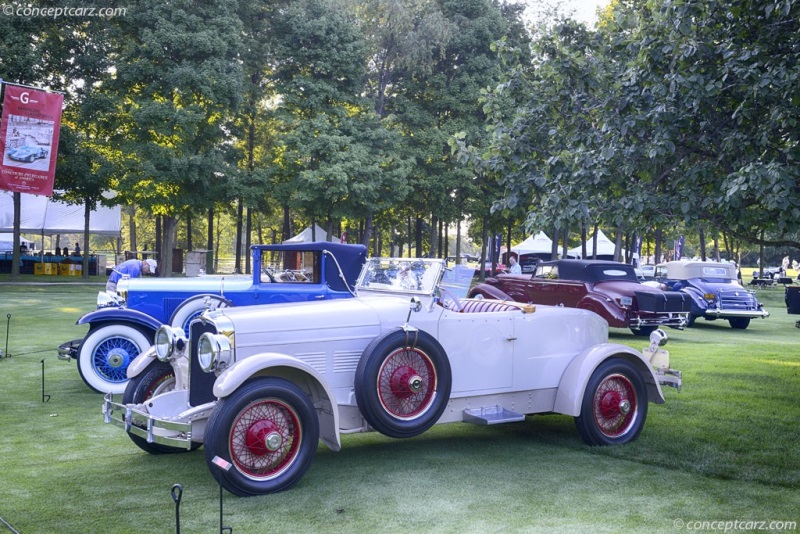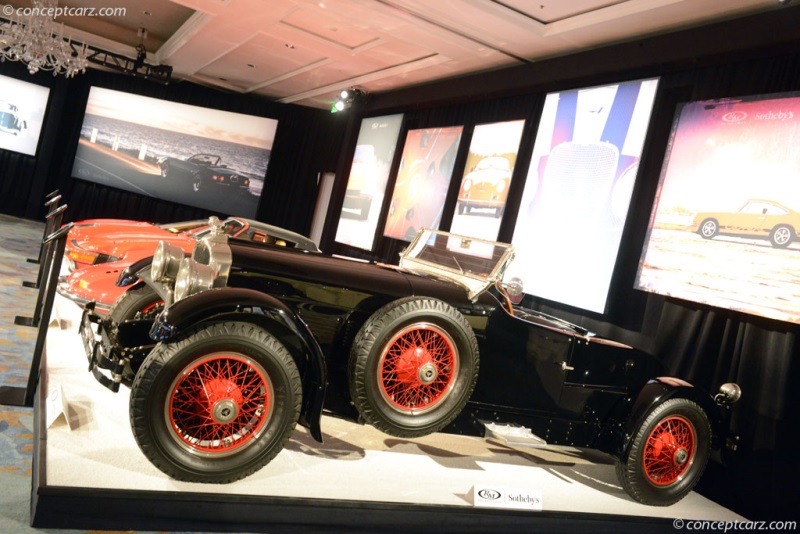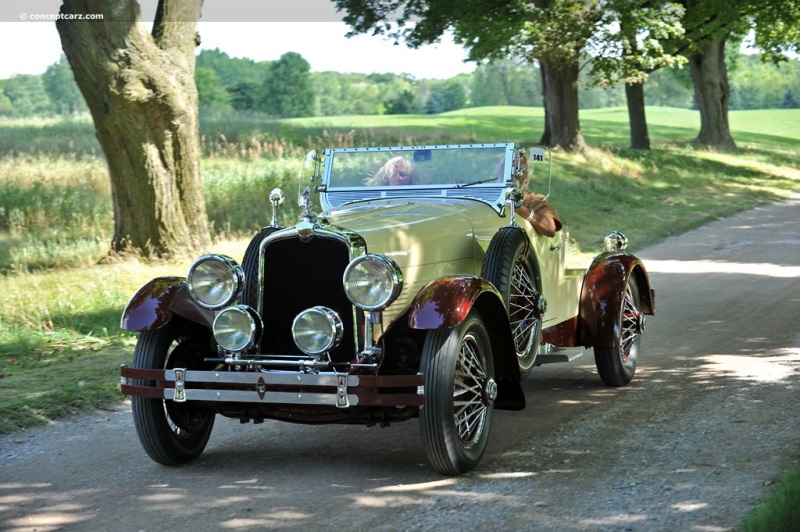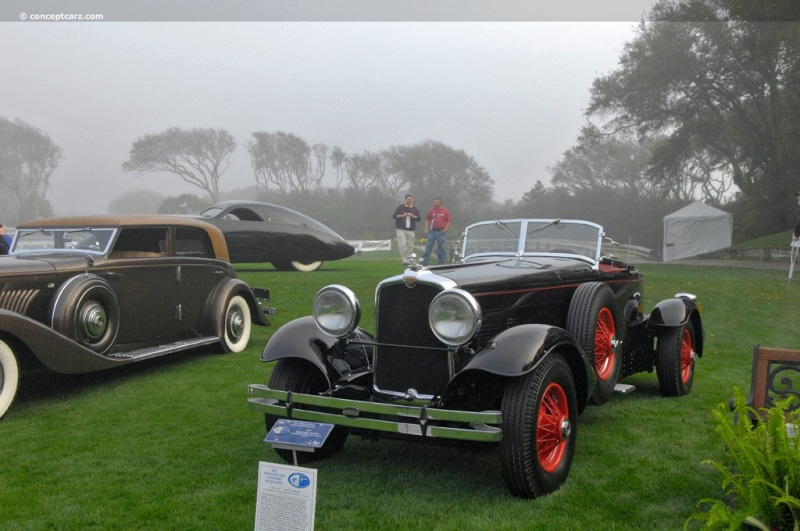In 1898, at the age of 22, Harry Stutz proved his talents and mechanical skills by assembling his first gasoline-powered vehicle on his family's farm in Ansonia, Ohio. Capable of driving under its own power, it was named 'Old Hickory' as it was constructed from discarded agricultural equipment components. By 1906, he was an employee of American Motors where he designed a 30-40 horsepower touring car. The following year, he joined Marion Motors as chief engineer, where he designed a rear axle-mounted transaxle. 
Boattail Speedster
View info and historyIn 1910, Stutz left Marion to start his own venture, Stutz Auto Parts Company, with the financial backing of his friend Henry Campbell to manufacture the transaxle he had designed. The company was soon tasked with designing a car dubbed the 'Empire' by the individuals who recently had the Indianapolis Motor Speedway paved with bricks. With the funds from the project, Stutz created a vehicle entirely of his own, taking just five weeks to create his first automobile. It was powered by a 398 cubic-inch Wisconsin T-head four-cylinder with four valves per cylinder, driving one of his own transaxles, and wearing a purposeful and minimalistic open coachwork. The first Stutz racer entered into the inaugural Indianapolis 500-mile race immediately after completion. The project was done in haste, hoping to make the start of the race and leaving no time for any pre-race testing. Despite the lack of preparation, testing, or fine-tuning, the car finished 11th out of 22 entries. Shortly thereafter, the Ideal Motor car company was formed with Campbell's financial backing. The first cars to roll off the production line were in 1911 and were essentially identical copies of the Indianapolis race car with the addition of fenders and lights. They used a T-head Wisconsin four-cylinder engine with 60 horsepower, right-hand steering, and a Stutz-designed transaxle. By 1917, Stutz began using engines of their own creation. The Stutz Company of Indianapolis, Indiana, enjoyed early success with its motorcars, but sales stagnated during the early 1920s as it was slow to adapt to new ideas, technologies, and designs. As many of its competitors in the upper-middle price range began to introduce new eight-cylinder models, Stutz clung to its six. In 1922, Stutz vehicles finally migrated to left-hand-drive on closed models, and as late as 1923, most Stutz bodies were open models. 
Boattail Speedster
View info and historyNear the close of 1925, Hungarian-born Frederick E. Moscovics arrived at Stutz as the new general motor. He was tasked with modernizing Stutz and given a budget of over $1 million. He quickly abandoned the existing models and commissioned a completely new car known as the Vertical Eight with Safety Chassis.Through the years that followed, the Stutz returned to prosperity, but as the close of the 1920s came into view, the Stutz Motor Company was involved with several lawsuits, including a breach of contract regarding engine building and over the design of the low-slung worm gear that they had been using. These lawsuits, coupled with dwindling sales due to the Great Depression, crippled the company. Production in 1930 was just 1,500 units, and by 1934, only six Stutz cars were produced. That same year, the factory closed its doors, and the Stutz marque was added to the vast list of companies that did not survive the Great Depression.The Stutz Eight
Fred Moskovics was a brilliant man and visionary who had built a solid reputation for himself in the auto industry. While at Marmon, he led the company to its most charismatic and high-performance products to date. His ideas for the automobile industry were influenced by the sophisticated machines from Europe and integrated with the designs and technology produced across the Atlantic. To that end, the new Eight-cylinder 'Safety Stutz' was highly sophisticated, using ten main bearings, dual ignition, dual throat carburetion, chain-driven overhead camshafts, and cross-flow porting. The new chassis was equally impressive, developed to complement the performance of the new engine. The Timken worm drive rear axle allowed the whole chassis to rest considerably lower than many other conventional chassis of the era. Stopping power was initially provided by a Timken hydrostatic setup, later replaced by Lockheed hydraulic brakes with oversized finned drums at all four corners. The transmission was initially a three-speed Warner setup.
Boattail Speedster by Bohman & Schwartz
View info and historyThe 1927 Stutz 'Safety Stutz' Vertical Eight Model AA won every American Stock Car race entered and was declared World's Champion. It set a 24-hour speed record, averaging 68 mph over 24 hours. LeBaron created two custom Blackhawk Speedster bodies, and Stutz designed and built the four-passenger speedster. The Stutz four-passenger body was created for races that required four seats, including the 24 Hours of LeMans. A French Stutz agent entered a stock example of the Stock Stutz Blackhawk Four-Passenger Speedster in the 1927 LeMans race. The Stutz proved its potential early in the race, leading an entire team of works Bentleys, and held onto the lead for much of the race. The ambitions of finishing first came to an end when the Stutz lost high gear later in the race, forcing the Stutz to finish second. The 1926 Stutz Vertical Eight was offered on a 131-inch chassis. In 1927, the 131-inch platform was joined by a longer 145-inch version along with several new body styles. The list of existing styles included a four- and five-passenger Speedster, four-passenger coupe, brougham, sedan, and a rumble seat coupe. A seven-passenger sedan and Berline were new body styles, resting on the longer wheelbase. The boat-tail design made its debut in 1927 and was the first American car with this style of coachwork. The 298.6 CID SOHC inline eight-cylinder engine developed 95 horsepower and was backed by a three-speed manual gearbox. The suspension was comprised of a solid front and a live rear axle with semi-elliptic leaf springs. Prices were in the $3,100 range for most body styles except for the 7-passenger cars, which were priced at approximately $3,700.
Speedster by Robbins Body Corp
Chassis #: AA-C18-86501
Engine #: 84675
View info and history
Auction entries : 1The 1927 Stutz was the modern successor to the legendary Stutz Bearcat of the Brass Era and America's fastest production car of the time.
by Daniel Vaughan | Dec 2006
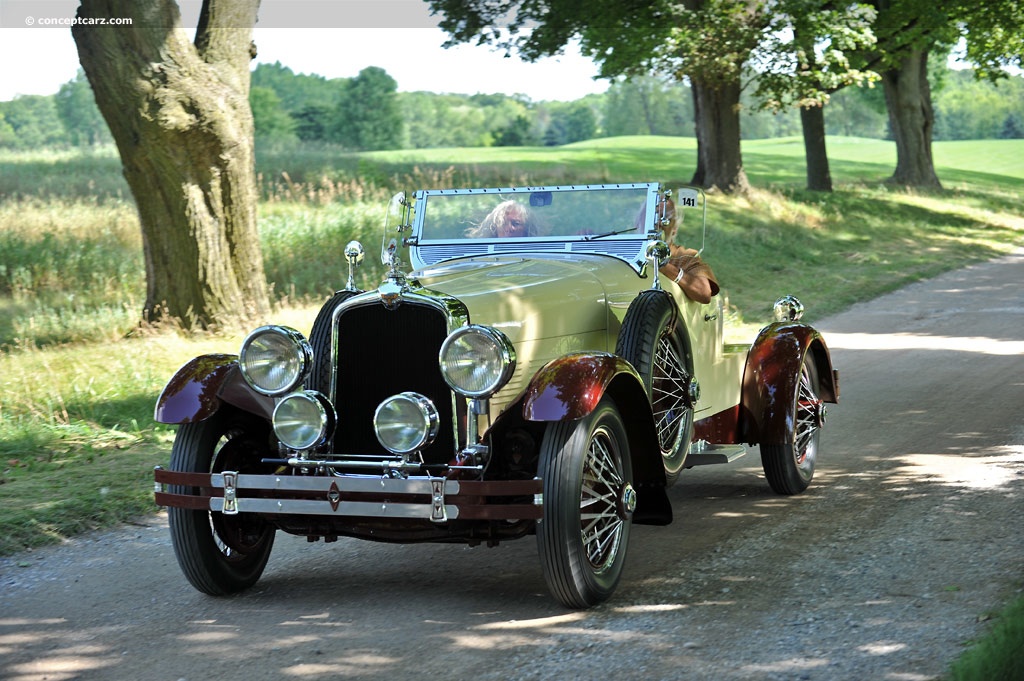
Boattail Speedster
View info and history

Boattail Speedster
View info and history
Fred Moskovics was a brilliant man and visionary who had built a solid reputation for himself in the auto industry. While at Marmon, he led the company to its most charismatic and high-performance products to date. His ideas for the automobile industry were influenced by the sophisticated machines from Europe and integrated with the designs and technology produced across the Atlantic. To that end, the new Eight-cylinder 'Safety Stutz' was highly sophisticated, using ten main bearings, dual ignition, dual throat carburetion, chain-driven overhead camshafts, and cross-flow porting. The new chassis was equally impressive, developed to complement the performance of the new engine. The Timken worm drive rear axle allowed the whole chassis to rest considerably lower than many other conventional chassis of the era. Stopping power was initially provided by a Timken hydrostatic setup, later replaced by Lockheed hydraulic brakes with oversized finned drums at all four corners. The transmission was initially a three-speed Warner setup.
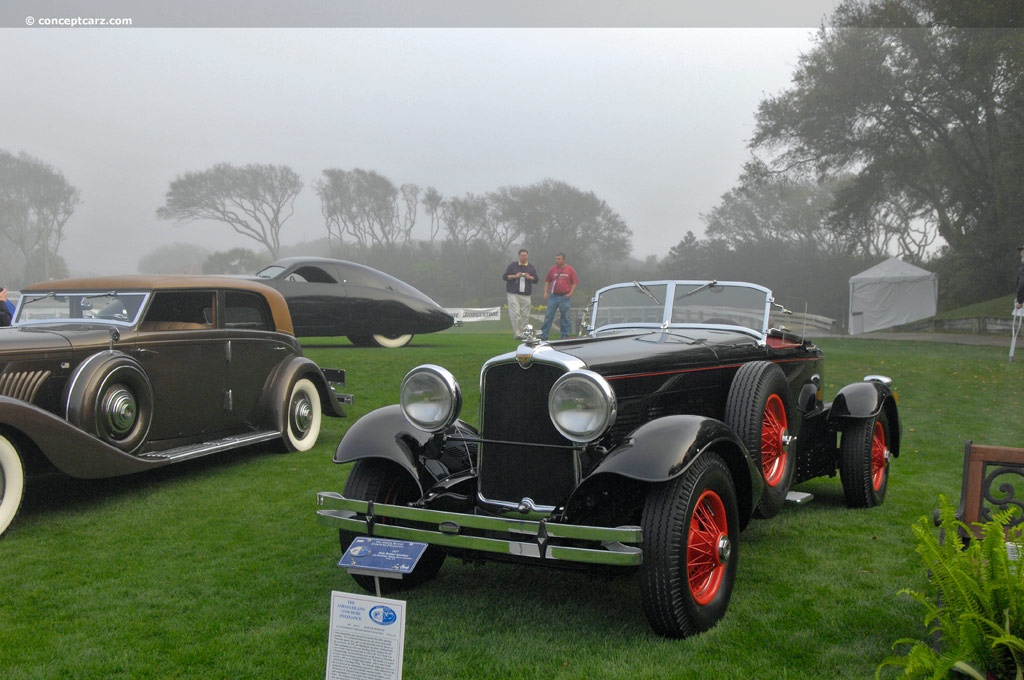
Boattail Speedster by Bohman & Schwartz
View info and history
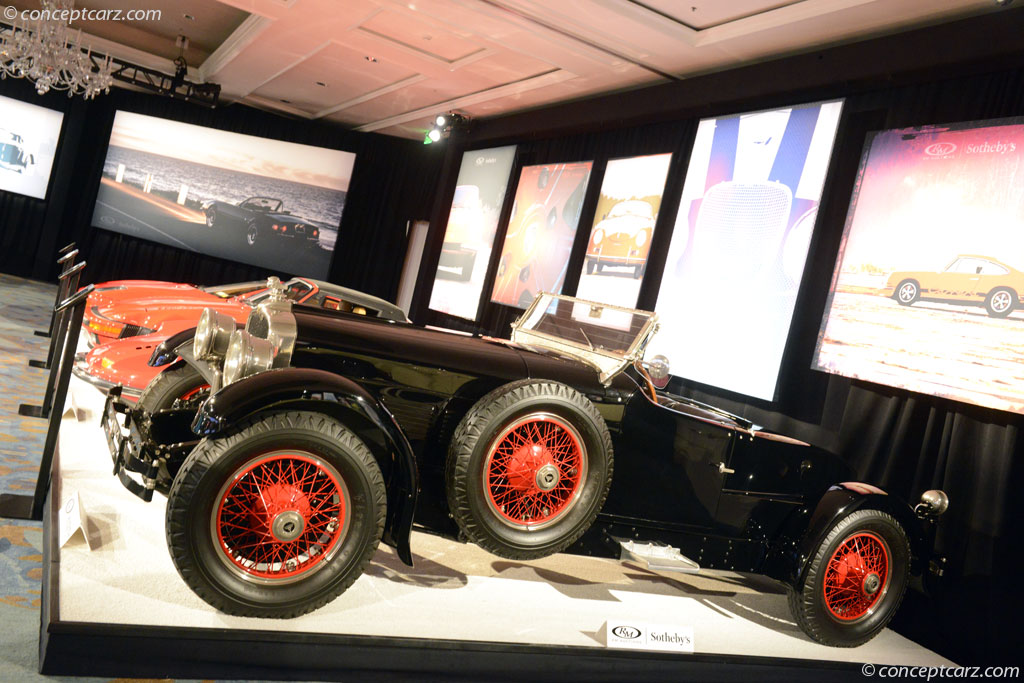
Speedster by Robbins Body Corp
Chassis #: AA-C18-86501
Engine #: 84675
View info and history
Auction entries : 1
by Daniel Vaughan | Dec 2006
Related Reading : Stutz Model 8 History
Harry C. Stutz was born in 1876. He grew up on the family farm, where he often helped repair their farm equipment. This led to a fascination with engines, and in 1897, he built his first car soon after, he began designing and creating engines. The Stutz Company, based in Indianapolis, Indiana, introduced its first production vehicle in 1911. The vehicle, after only five months of design and build,....
Continue Reading >>
Continue Reading >>
Related Reading : Stutz Model 8 History
The Stutz Series M coupe was introduced in 1929 and featured an auxiliary trunk, a rumble seat, and dual side-mount spare tires and wire wheels. Right above the front bumper is driving lights that turn in synchronization with the steering. Before the Series M was the introduction of the Stutz Vertical Eight in 1926, which is considered to be the most European of the US auto designs of the era.....
Continue Reading >>
Continue Reading >>
Similar Automakers
Similarly Priced Vehicles
1927 Stutz Model AA Vehicle Profiles
Recent Vehicle Additions
Performance and Specification Comparison
Price Comparison
Model 8 Specification Comparison by Year
Year
Production
Wheelbase
Engine
Prices
131.00 in., 145.00 in.
8 cyl., 298.60 CID., 92.00hp
8 cyl., 289.00 CID., 110.00hp
8 cyl., 289.00 CID., 110.00hp
$3,500 - $6,900
5.30 in., 134.49 in., 134.50 in., 145.00 in.
8 cyl., 322.00 CID., 113.00hp
8 cyl., 325.00 CID., 185.00hp
8 cyl., 325.00 CID., 185.00hp
$3,000 - $6,900
Related Automotive News

McLaren Racing Inducted Into Canadian Motorsports Hall Of Fame
Two-time Indy 500 winner Johnny Rutherford accepts honour on behalf of the team
TORONTO, Ont. — On February 12, McLaren Racing was inducted into the International Category of the Canadian Motorsport Hall of fame. The honour was accepted...

1929 Duesenberg J/SJ Convertible And 1963 Ferrari 250/275P Win Best Of Show At The 23rd Annual Amelia Island Concours D'Elegance
JACKSONVILLE, FL (March 10, 2018) – The 1929 Duesenberg JSJ Convertible and 1963 Ferrari 250275P won the Best In Show honors on Saturday, March 10, at the 23rd annual Amelia Island Concours dElegance. The news comes following another crowd...

Sportiness In The Brand DNA: Game-Changer With Mercedes-Benz At Goodwood Festival Of Speed 2017
With a dozen racing cars and sporty vehicles from over 100 years, Mercedes-Benz Classic sums up the motto of this years Goodwood Festival of Speed Peaks of Performance – Motorsports Game-Changers celebrates competition vehicles that have written...

120 years of motor sport at Mercedes-Benz take centre stage at the Goodwood Festival of Speed 2014
Addicted to Winning at this years Goodwood Festival of Speed, Mercedes-Benz looks back on some fascinating racing victories of the last 120 years
The unique motor sport heritage of the Mercedes-Benz brand is being celebrated with an exclusive i...

Techno Classica 2014: more than 30 racing cars to celebrate 120 years of Mercedes-Benz motor racing history
Cars that were the heroes of magical moments put their stamp on this high-powered, most comprehensive show presentation
With more than 30 vehicles, Mercedes-Benz Classic presents motor racing history in all its unique breadth and depth
120 years o...



















